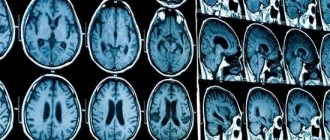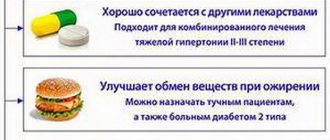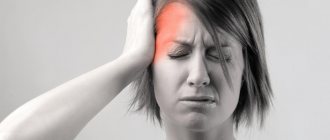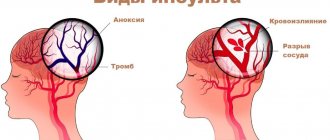In the old days, Scottish monks strengthened their strength with small portions of whiskey. Alcohol made it easier to endure harsh winters, cope with joint pain due to the eternal dampness of the monastery walls, and digest rough food. Modern scientists confirm: a dose of 20–30 g of strong drink really has a healing effect. It is especially interesting to see how whiskey affects blood pressure.
Mechanism of action. Once in the blood, the ethanol contained in whiskey dilates blood vessels. The drink acts very quickly, so blood pressure drops within 5-10 minutes after drinking alcohol. It has been experimentally proven that 50–70 g of whiskey lowers blood pressure by 20 mmHg.
But this does not mean at all that with an increase in the dose of alcohol, the pressure will continue to decrease. On the contrary, if you cross the threshold of 70 g of whiskey, then after 30 - 40 minutes your blood pressure will begin to rise. And if you drink 50–70 g daily, the body will get used to it, and over time the pressure will drop less and less. That is, whiskey is not suitable for constant regulation of blood pressure.
The effect of the drink largely depends on the individual characteristics of the body. So, for some, after the first sip of the drink, the pressure rises.
Drinking whiskey for high blood pressure
Whiskey is strictly prohibited for hypertensive patients who constantly take medications to lower blood pressure: ethanol reacts with medications, resulting in the release of strong toxins into the blood. But for those who do not take medications, 50–70 g of the drink (no more than 1–2 times a week) is even beneficial. It is believed that with high blood pressure, without much harm to yourself, you can only drink such an amount of alcohol that is guaranteed not to cause a hangover.
The maximum hangover-free dose is 1.5 ml of pure ethanol per 1 kg of person’s weight. Its volume in milliliters for whiskey of different strengths is given in the table:
| Whiskey strength, % | Human weight, kg | |||||||
| 50 | 60 | 70 | 80 | 90 | 100 | 110 | 120 | |
| 40 | 187,50 | 225,00 | 262,50 | 300,00 | 337,50 | 375,00 | 412,50 | 450,00 |
| 45 | 166,67 | 200,00 | 233,33 | 266,67 | 300,00 | 333,33 | 366,67 | 400,00 |
| 50 | 150,00 | 180,00 | 210,00 | 240,00 | 270,00 | 300,00 | 330,00 | 360,00 |
| 55 | 136,36 | 163,64 | 190,91 | 218,18 | 245,45 | 272,73 | 300,00 | 327,27 |
| 60 | 125,00 | 150,00 | 175,00 | 200,00 | 225,00 | 250,00 | 275,00 | 300,00 |
| 65 | 115,38 | 138,46 | 161,54 | 184,62 | 207,69 | 230,77 | 253,85 | 276,92 |
| 70 | 107,14 | 128,57 | 150,00 | 171,43 | 192,86 | 214,29 | 235,71 | 257,14 |
The specified amount of whiskey is not allowed to be drunk immediately, but intermittently over 4–5 hours. After such excesses, you need to abstain from alcohol for 2-3 weeks. For women (due to a slower metabolism), the hangover-free dose is reduced by 20–30%.
Headaches in the temple area
Headache in the temples is one of the types of cephalalgia, which occurs equally often in both men and women. It can be unilateral or bilateral, pulsating or pressing, last several minutes or drag on for several hours or even days. A headache that persists for a long time requires consultation with a neurologist, since there are many reasons for this condition.
In our Private Practice clinic, you can be examined by leading neurologist Larisa Aleksandrovna Baldorzhieva and receive an individual treatment plan at an affordable cost. You can make an appointment any day of the week using the phone numbers provided.
Causes and symptoms
Any pain requires careful differential diagnosis. Pain syndrome can be a consequence of neurosis or signal any somatic pathology. Below we will look at the most common causes of headaches in the temple area.
Change in blood pressure
Low blood pressure manifests itself in the form of a throbbing or pressing headache in the temples. In addition, weakness, nausea, flickering of spots before the eyes and coldness of the extremities are possible. With increased pressure, the pain is localized not only in the temples, but also in the back of the head. At the peak of high blood pressure, a person may experience nausea or even vomiting, the face begins to turn red, and photopsia (multiple flashes) appear before the eyes.
Stress
Against the background of chronic stress, all vital processes in the body are disrupted, including a deterioration in the tone of the vascular wall, an increase or decrease in blood pressure, causing prolonged pressing pain in the temples.
Migraine
Unilateral throbbing pain in the temple should alert the doctor to the possibility of migraine. Migraine is a hereditary disease that manifests itself in the form of instability of blood vessels in the brain. Such people often develop headaches due to climate change, severe stress and other external irritants. The disease itself does not cause serious harm to health, but it does cause a lot of inconvenience to a person. An attack can last from several seconds to several days, in some cases an “aura” occurs - a symptom complex that appears immediately before the onset of a migraine (spots before the eyes, nausea, photophobia, weakness, etc.).
Infection
If you have a headache in your temples, and the day before you sat for a long time in front of the air conditioner, it’s a cold. In addition to pain, other manifestations of infection may cause concern: runny nose, cough, hoarseness, weakness, fever.
Intoxication
Alcohol abuse and cigarette smoking have a negative effect on the walls of blood vessels, which leads to the development of pain.
Diseases of the musculoskeletal system
Osteochondrosis, neuralgia and other pathological conditions can cause shooting headaches affecting the back of the head, crown and/or temple.
Endocrine disorders
During puberty, pregnancy, lactation and menopause, hormonal imbalances may occur, leading to regularly occurring headaches. Also, due to diseases of hormone-producing organs (thyroid gland, pancreas), pain syndrome can begin spontaneously and go away with treatment of the underlying disease.
Dental pathology
This is one of the reasons that doctors often miss, attributing the occurrence of pain in the temples to nervous tension. If you haven’t been to the dentist for a long time, and you couldn’t determine the cause of your headache, contact your nearest dental clinic!
Diagnostics
Diagnostic measures at the Private Practice clinic include laboratory (blood and urine tests) and instrumental research methods (x-ray of the spine and skull, ultrasound of cerebral vessels, etc.). We have our own laboratory and modern diagnostic equipment.
Treatment
Headache is a symptom that has been successfully treated by a neurologist at our clinic for many years. The prescription of drugs depends on the cause of the pain syndrome. Dr. Baldorzhieva can prescribe nootropics, antidepressants, anticonvulsants, muscle relaxants, painkillers, depending on the situation. Osteopathic treatment of headaches provides excellent results, which is safe and effective. If necessary, the patient is referred for consultation with related specialists.
If you suffer from headaches in the temple area, do not self-medicate, contact the experienced doctors of our clinic and receive qualified medical care.
You can make an appointment with a doctor by calling
+7+7 (495) 980-13-16
Whiskey cocktails for high blood pressure
For high blood pressure, it is recommended to mix whiskey with apple or birch juice or cranberry juice. Approximate proportions: for 150 – 200 ml of juice – 50 ml of whiskey. Ice is added to cocktails to taste.
Whiskey also goes well with hot or cold rooibos, especially chocolate and strawberry. If your blood pressure is high, then it is better to choose not ordinary tea for dessert, namely rooibos with a slice of lemon: it lowers blood pressure and neutralizes the effects of alcohol. Rooibos also helps the morning after a party.
Hypertensive patients should avoid tea or coffee with whiskey.
How does alcohol affect blood pressure?
What is subtle is that it is only possible to determine exactly how alcohol, in what doses and what type, will affect the blood pressure level of your relative. The procedure is simple: measure your blood pressure, drink, and half an hour later (no less) measure your blood pressure again. If you make such measurements regularly, you can identify a pattern.
But you should understand that even with small portions of alcohol, which you or your loved one drinks regularly, the blood vessels begin to deform. This all affects blood pressure and health in general.
Whiskey and cola
Whiskey and cola are the most popular, but also the most harmful combination. Such a cocktail is strictly prohibited for hypertensive patients: cola with whiskey increases blood pressure. But it also makes sense for hypotensive people and people with normal blood pressure to abstain from the drink. Carbon dioxide, ethanol and fusel oils (they are present in any distillate) are a deadly mixture for both blood vessels and the gastric mucosa.
Whiskey and cola is not recommended for both low and high blood pressure
How does alcohol affect hypertensive patients?
Champagne, wine, and vodka, due to their properties, provoke a sharp increase in blood pressure, so those who have already been diagnosed with hypertension (hypertension) need to be very careful with drinking.
The most useful recommendation would be to contact your doctor and ask what kind of alcohol and in what portions you can drink and whether you can drink at all. Since there is no clear and unambiguous recommendation for hypertensive patients. Also, drug treatment clinics can provide advice in this matter. Narcological clinic “Ibis”
provides assistance to people with alcohol addiction.
The information is provided for informational purposes and is not a guide to action. Do not self-medicate. Be sure to consult a specialist.
The effect of beer on the human body
Beer is a drink produced by the alcoholic fermentation of malt wort using brewer's yeast, usually with the addition of hops. The ethyl alcohol content in most types of beer is 3–6% vol. (sometimes higher, strong drinks usually contain 8% vol., maximum - 14% vol.), dry substances (mainly carbohydrates) - 7-10%, carbon dioxide - 0.48-1.0% (according to materials Wikipedia).
Beer advertising shows us that beer is a path to easy communication, an attribute of fun and relaxation after a well-deserved day of work. But that's what advertising is for. And it is ingrained in the mind that beer is a low-alcohol drink and is less harmful than strong alcoholic drinks. However, beer - we emphasize once again - contains ethyl alcohol and is an alcoholic product.
Let us recall that ethyl alcohol is widely used in industry as a solvent and in medicine as a disinfectant.
Ethyl alcohol entering the body acts on the cerebral cortex: under the influence of alcohol, the predominance of excitation processes over inhibition processes is manifested.
In large doses, ethyl alcohol causes depression of the functions of both the spinal cord and the medulla oblongata. Under the influence of ethyl alcohol, death can occur as a result of paralysis of the respiratory center. In the last decade, acute poisoning with ethyl alcohol ranks first (about 60%) among poisonings with other toxic substances. Alcohol not only causes acute poisoning, but also contributes to sudden death from other diseases (primarily from diseases of the cardiovascular system).
The disguise of alcohol in “low-alcohol” products leads to their consumption more often and in larger volumes. Youth alcoholism most often begins with beer. A bottle of strong beer corresponds to approximately 75 grams of vodka. 32% of alcoholics became alcoholics as a result of systematically drinking beer.
Regular consumption of beer (as well as other alcoholic beverages) causes structural changes in the body, degeneration of tissues and their atrophy: the “bull’s heart” phenomenon, hormonal changes, cirrhosis of the liver, persistent dilation of facial vessels (especially nasal vessels), increases the risk of having children with mental and physical impairment. In addition, alcohol intoxication often causes accidents at home, at work, in transport, etc., and leads to violation of social norms and the law.
Modern brewers are required to use only approved food additives, however, there have been cases when, to ensure the safety of the drink, formaldehyde was added to beer (a disinfectant and deodorizing agent, it is used to preserve anatomical specimens, tanning leather, and for embalming). This substance causes tissue death. And to ensure the preservation of the “beer head”, cobalt chloride was used, which is highly toxic to the body.
Let's take a closer look at beer
Alcohol dilates blood vessels, involuntarily causing an increase in blood pressure. Regular consumption of beer makes this state of the body chronic, and the cardiovascular system has to adapt to a new way of working - as if under increased stress. As a result, the heart muscle “wears out” and cannot cope with its tasks. It turns out that the main harm of beer for a man lies in the occurrence of the most common male diseases - coronary heart disease, strokes, and heart attacks.
Beer, according to research by the World Health Organization, is one of the causes of colorectal cancer. And all because of plant resins, which, being the strongest carcinogens, are found in large quantities in hop cones.
The harm of beer to the body is manifested in gastrointestinal disorders: the stomach suffers from drinking any carbonated drinks, including beer. Carbon dioxide increases the acidity of gastric juice, which leads to gastritis, a disease that creates a favorable environment for the proliferation of Helicobacter pylori. These bacteria cause gastric ulcers, which often develop into cancerous tumors.
The foamy drink disrupts the functioning of the liver (liver cirrhosis, hepatitis), spleen and pancreas. Cold alcohol, or that which is diluted with chilled drinks and ice, is very harmful. The fact is that cold drinks and food negatively affect the spleen, and it is responsible for nutrition and hydration of tissues and muscles and for the distribution of fluids in the body. When the spleen is exposed to cold, fatigue and lack of concentration occur, which leads to weakening of the entire body. When the digestive tract is weakened and cold, it can be accompanied by a lack of appetite, gas, and a feeling of fullness.
The intoxicating drink contains cadaverine, a toxic chemical compound that has a neuroparalytic effect and has a detrimental effect on nerve cells.
Beer is a drink with hormonal activity. Multiple studies have confirmed that beer contains an analogue of female sex hormones, phytoestrogens. By a man's appearance, one can determine whether he is abusing beer or not. After all, for lovers of an intoxicating drink, feminization of the body occurs: fat is deposited in the hips and sides, the breasts and abdomen enlarge, and the amount of hair on the body and face decreases. Over time, men's potency decreases and sperm quality deteriorates. Those who have been drinking beer for 10-15 years are unlikely to avoid impotence.
Finally, the frequent urge to urinate does not train the kidneys at all, but increases the risk of narrowing their blood vessels. In case of modification of the vascular system and in conditions of active consumption of beer in the kidneys, the likelihood of hemorrhage increases, which, in turn, can lead to death.
Despite the fact that the drink made from malt and hops is low-alcohol compared to, for example, vodka or cognac, it becomes addictive 4 times faster than strong alcohol. Beer alcoholism is a disease whose onset is very difficult to track, but it occurs much more often than all other types of alcohol addiction. Due to the low alcohol content, you can drink a lot of beer in one evening. And if you often feel an irresistible desire to “have a glass or two with friends,” if you cannot relax after a hard day without a bottle of beer, if after drinking it you experience short-term memory lapses, think about it: you have quietly become a beer alcoholic.
Based on materials from the Yekaterinburg City Center for Medical Prevention











